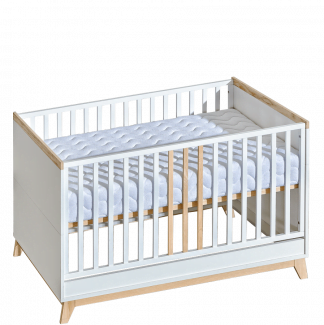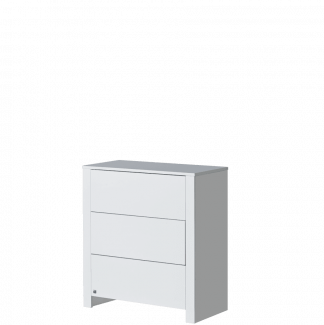Getting your child to keep order is hard work. However, with our help, we will certainly teach the child how to take care of his room and where to put away individual toys. Cleaning should not be associated with an unpleasant chore. Cleaning up together with fun can bring positive results. Let us remember, however, not to help our children.
A few ideas on how to effectively keep your child’s room in order!
1. Use boxes: A great idea is to use boxes that you can put on a shelf. If we determine which box to hide the puzzle into, and which block to place, the child will easily remember it and put it back there. You can mark each of them with an appropriate sticker / inscription, thanks to which you will immediately know what is stored in them.
2. A chest for toys: Despite having their own room, children often play in other rooms – kitchen or living room. Therefore, it is worth having a trunk that we can put in a place of our choice. Thanks to this, we will be able to quickly hide toys that children have carried around the apartment.
3. Easy access to toys: Remember to make it easier for your child to keep the room tidy. Therefore, we should try to keep shelves, drawers and compartments within the reach of a toddler. Thanks to this, they will be able to use them freely, reach for them and then put them back in the designated place. On the higher shelves, we can put toys and items that are less frequently used by our child.
4. Define the place of toys: It is a good idea to establish a place for storing certain items from the very beginning. Thanks to this, it is easier for the toddler to remember where to put the book and where to put the board game. You can use trunks, toy bags, plastic and wooden boxes. It will also be easier to separate zones: play, sleep and study. This will help us maintain order and harmony.
5. Segregation of unnecessary items: Remember not to clutter the child’s room. It should contain items that are actually used by our children. Let’s get rid of broken toys and too small clothes right away. Items that are no longer used can be given to other children or hidden in a container and placed in the attic or basement. In summer, take out winter clothes, leaving only the currently worn clothes.
Children’s furniture in pastel colours
Pastel children’s furniture from the Polish manufacturer ATB will be perfect for a room for both girls and boys. Pastel colors are subtle shades of a regular color that has been lightened with white. This makes them less overwhelming, subtle and delicate. These colors are divided into cold (pastel blue, mint, lilac) and warm (pastel pink, pastel yellows). Pastel colors are characterized by a mixture of many soft and delicate shades. They create a homely atmosphere of warmth and tranquility, and are the perfect way to create a cozy home.
Why do we love pastel furniture and how to use pastel colors in a child’s room?
What colors should you match pastels with? A combination of pastel colors and white will always be a safe option – if your child’s room is painted white, pastel children’s furniture will definitely suit them. A combination of pastels and grays also works well.
The Classic children’s furniture set includes all the furniture you need to decorate your toddler’s room. The individual pieces of furniture from this set are white, but they contain decorative elements in several pastel shades to choose from: powder pink or powder blue, pink-gray pastels, white in combination with pastels and the color of natural wood – choose the combination that suits you best.
Various types of kids’ furniture to choose from
You can purchase the entire children’s furniture set or choose only the furniture you need. In this category you will find a three-door white wardrobe with elements in the color of natural wood and colored stripes finished in pastels. If your child’s room is smaller, we suggest a narrower two-door wardrobe, finished in a similar style. You can combine the wardrobes with a white bookcase with bookshelves or a pastel-white chest of drawers with drawers in several pastel shades to choose from. If your child is older and needs his / her own space to do homework, we offer a white computer desk from the Classic set in several shades of pastel finishes.
Why are pastel colors so popular in interior design?
The use of pastel colors in interior design is becoming more and more popular because such interiors have a soothing and calming effect. Therefore, you can successfully use such colors in children’s rooms. These colors provide a sense of calm and can be used to create a more relaxing atmosphere in children’s bedrooms.
Pastel colors, especially those used on the walls, will brighten the room and thus optically enlarge the room.
Different ways to use pastel colors in decorating your kids’ room
There are many ways to use pastel colors to decorate your home. From curtains, bedspreads and cushions to furniture and rugs, you can find endless inspiration for the color palette that matches your style.
One of the best ways to bring pastel colors into your home is to choose a light color as the primary color of your wall. This will allow you to play around with other colors in smaller doses – think about using light blue as a wall accent or painting a small table pink. You can also try using pastel colors as an accent in darker colors to create a contrast – this will make the room more spacious and inviting.
The evolution of pastel colors
Pastel colors are often associated with femininity, innocence and sweetness. These colors are often seen in decorations for weddings, birthdays and other occasions. Pastels are also often used in clothing items such as blouses, skirts, and dresses.
The word “pastel” comes from the French word “pâte de couleur” which means “paste of color”. The term was first used by artist Claude Lorrain to describe his painting technique in 1676. For the first time, pastel colors were used in art during the Renaissance. Artists used chalk or charcoal to create pastels on paper or canvas. The first time pastel colors were used for textiles in the 18th century when they were brought from France to England.


















